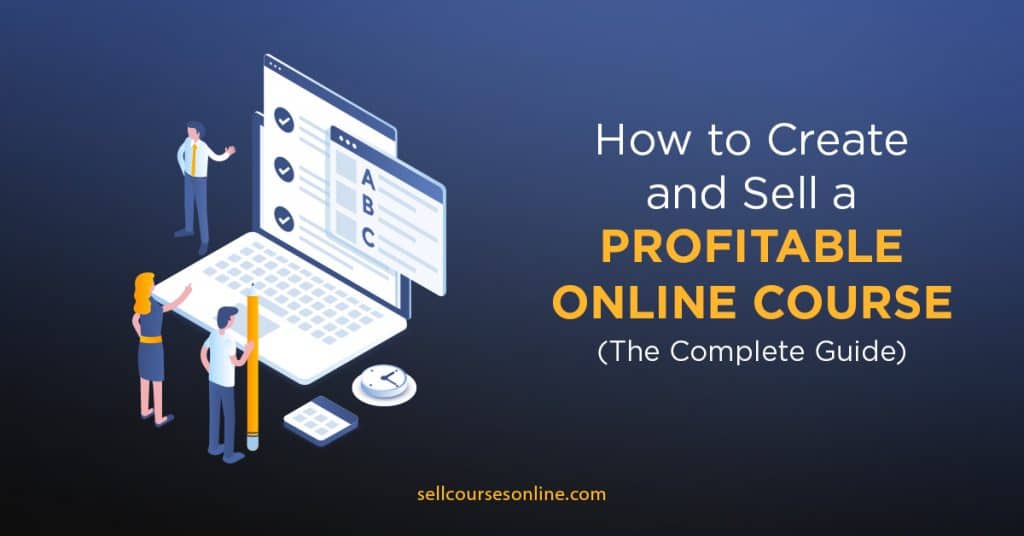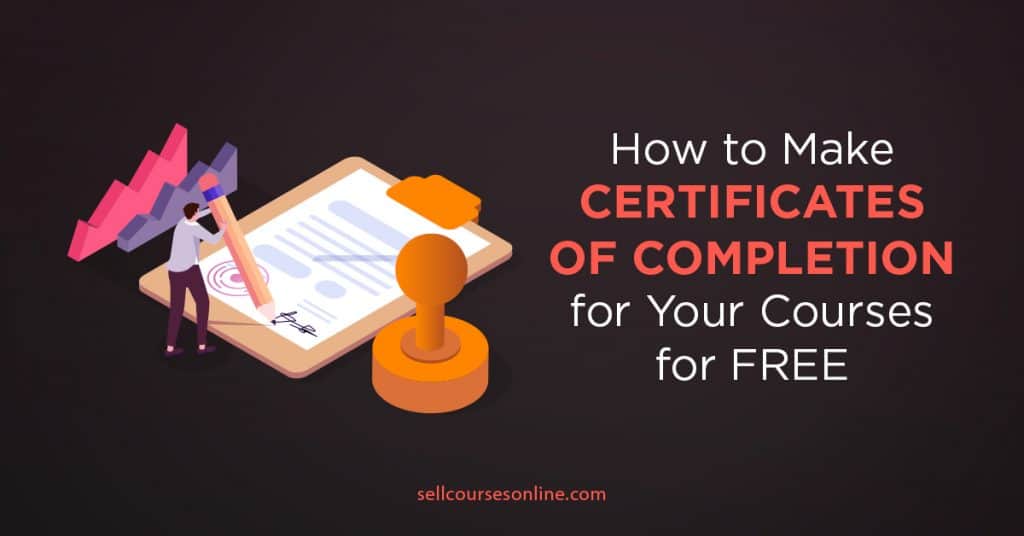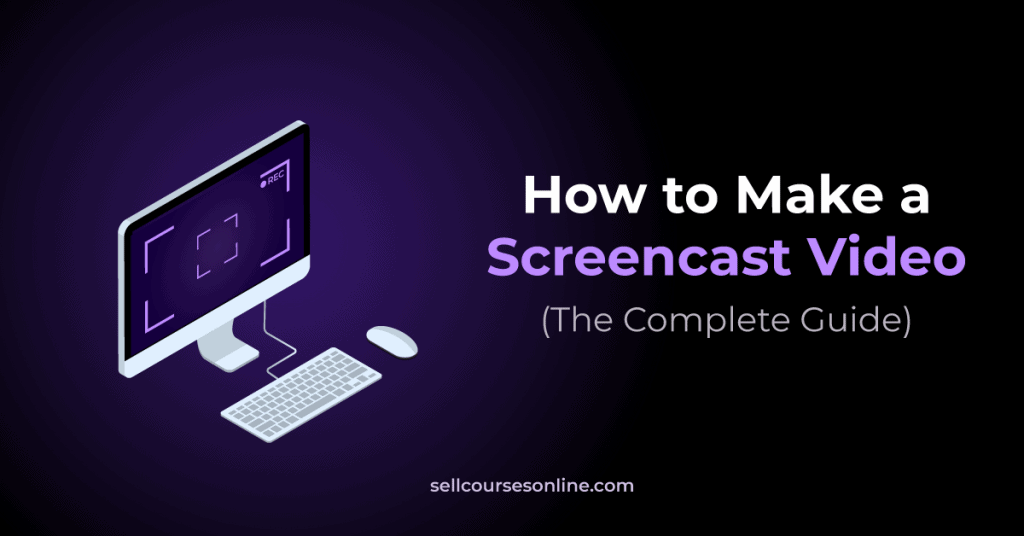You are finally ready to upload your course, and it asks you to write a course description. You thought you were done, but now you are scrambling to write something convincing. Does this sound familiar?
We see course creators spend loads of time planning, recording, and editing their courses while leaving the description until the eleventh hour. While there are good reasons for this, you should not treat it like a last-minute task.
In this guide, we’ll share 11 effective tips on how to write a course description that attracts the right audience and convinces them to buy. We’ll also share some examples of course descriptions, both good and bad.
Let’s get started.
- What Is a Course Description?
- 1. Be Clear, Then Clever
- 2. Use Aspirational Language
- 3. Empathize With Your Audience
- 4. Clarify Who and What Your Course Is For
- 5. Show Your Personality
- 6. Build Credibility
- 7. Clarify the Scope of Your Course
- 8. Make It Visually Appealing
- 9. Make It Flow
- 10. Keep It Succinct
- 11. Write It Last, but Not Last Minute
- Summary
What Is a Course Description?
A good course description contains all the information your target audience needs to make an informed purchase. The definition of course description can change based on your platform, but in this guide, we will refer to it as all the information on your course landing page.
This information may include:
- An overview or summary of the course
- Course learning objectives
- The target audience
- Course requirements
- Course curriculum
- Pricing details
- Any other relevant details
Many online courses have a simple layout for their sales page where the whole description is on a single page. However, many courses prefer to organize the information differently.
For example, in this Master Herbalist course, the landing page includes a course promo video at the top, and the information is organized into four tabs: About, Lessons, Career, and Certification.

While platform features and design can make these descriptions look different, they serve the same function, i.e., influencing a potential learner’s decision to enroll in your course.
Without further ado, let’s share the tips that will help you create standout course descriptions.
1. Be Clear, Then Clever
You have probably heard about the importance of clarity over cleverness. Yet, people frequently try to stand out by using obscure language. The risk is that the right audience might not understand what your course will do for them.
If you have a loyal audience who signs up for anything you offer, you can risk being clever in your description. In this case, it might be even more effective because it makes them feel connected to you and your content.
However, if your audience does not know you and you are working with basic concepts, it is best to steer clear of anything clever to avoid misunderstanding.
The other problem with cleverness is that it often takes up space that the creator could have used for something of greater value. In a course description, every word must pull its weight. If it doesn’t add value, don’t include it.
For example, in this blood pressure course, Understanding Your Vital Signs: How Blood Pressure Works, there’s an attempt at humor in the line, “under pressure to understand blood pressure?” Unfortunately, it’s a poor use of humor and doesn’t add value.

The course Become a Coffee Expert: How to Make the Perfect Cup, instead, demonstrates cleverness effectively. By stating that one of the requirements is that “you should like to drink coffee,” it expresses a tongue-in-cheek personality, giving away a taste of what readers can expect when they sign up.

2. Use Aspirational Language
Many course creators fall into the trap of describing their client’s current painful circumstances using statements or questions like these:
- Are you tired of feeling fat, frumpy, and fatigued?
- Do you feel powerless to change your situation?
- How long has it been since you’ve felt beautiful?
- Do you know you’re at risk for heart disease?
These sad tactics work, but they often attract those not ready for change.
Fear-based language does not set the expectation for transformation like aspirational language does.
Use aspirational language if your course helps your audience overcome difficult life circumstances. And, when you do include pain points, keep your primary focus on the benefits or the result rather than anchoring them to their current state.
The opening screen for the Voice Body Connection course features a perfect example of aspirational language. By stating that “You deserve to have a powerful, confident voice. Now more than ever,” it sets an expectation for a breakthrough.

Consider the audience this description would attract compared to something like, “Do you feel that when you talk, no one listens?”
3. Empathize With Your Audience
One of the biggest hurdles experts face is losing touch with what it’s like to be a beginner. This can cause a disconnect with their audience. That’s where empathy comes in.
Empathy lets you be student centered and see the topic from their perspective. It helps in:
- Understanding your audience’s motivations
- Describing pain points and results using their language
In the Voice Body Connection example, the course creator taps into the motivations of her audience—their desire for increased confidence.
In the Virtual Kenpo course, the description discusses Kenpo for self-defense.
While martial arts have many aspects, like fitness, physical discipline, mental discipline, or self-control, it focuses on self-defense and features an image of a woman striking a man.
It demonstrates empathy because it positions the course toward the clients’ primary motivation.

When reviewing your course page, read it from your client’s point of view.
What are they looking for? What’s the burning question they want answered?
Close the distance by speaking their language.
4. Clarify Who and What Your Course Is For
Empathizing with your audience is much easier once you have a clear idea of who your course is for.
The Virtual Kenpo course description page does this very effectively. By focusing on a particular audience member—the one who wants to defend herself—it talks about Kenpo as self-defense.
She imagines defending herself against a bigger, stronger opponent in the visuals and words. If she is actively looking for a solution, she is more likely to choose this course than a broadly marketed one.
Having a clear picture of your ideal avatar is the key to focusing your description on the student rather than the topic. Rather than stating how many stances or katas she will learn, the front page states, “Training for Survival.” It makes the course about her and her needs.
Looking at another example, this course called Mindset offers no indication of who or what it is for. The description provides no focus, making it difficult for an ideal audience to see themselves in the message. While conciseness is a virtue (see Tip #11), all the description offers is this: “Get into the right mindset to overcome struggles of all kinds.”

When reviewing your description, consider whether your ideal audience resonates with what you’re saying and if they can see themselves in it.
When your goal is to be relevant to all, you end up relevant to none. A broadly-focused course can’t account for the differences in how your topic applies to the individual members. The mindset of stay-at-home moms will look different from that of college students or corporate managers.
5. Show Your Personality
Your personality should shine through both your course and course description. People want more than information: they want a connection. You can create it by showing off your personality.
Your course description should give a sample of what you are like. You can see a bit of the creator’s personality in Become a Coffee Expert and Voice Body Connection course descriptions.
Your style makes you, you. When your personality shines, your course stands out.
Consider the tone of your course. Are you:
- Irreverent?
- Serious?
- Ethereal?
- Corporate-friendly?
- Quirky and artsy?
- Nerdy and technical?
Take a look at Dr. Albert Wong’s Somatopia training. You get a sense of his energy in the visual elements and the picture he paints with his words. He flaunts his brilliance, attracting thought leaders, training directors, and master clinicians. It’s a well-executed example of showing his personality.


Another brilliant example is the Doodle Institute. The course’s fun and artsy energy highlight the creator’s style, making her program stand out and setting the expectation for what it is like to be a member.

6. Build Credibility
Course creators make two common mistakes related to their experience and education. They either forget to talk about it, or they talk about it too much. Both sabotage your credibility.
Sharing something about your experience and education does more than telling someone that you are an expert. For example, what would you expect from a massage course taught by each of these three experts?
- A massage therapist with five years of sports massage experience with a football team.
- A licensed couples therapist who created a massage class to foster intimacy and empathy in a hurting marriage.
- A massage therapist and master herbalist with 15 years of experience blending Eastern and Western approaches.
In addition to bolstering their credibility, each description provides context for how that expertise was earned.
Describing your education and experience and establishing your credibility should not take up much space. Don’t overdo it. Many course creators unintentionally sabotage their credibility by overexplaining, which comes across as defensive and steals the focus.
7. Clarify the Scope of Your Course
If your course is often confused with a similar topic or is narrowly focused, then clarify what you’ve included and what you left out.
In the Voice Body Connection example, the description makes it clear that it is not about helping people recover from vocal cord damage. While it might include content that helps students avoid damaging their voice, that is not its purpose.
Looking back at the Mindset course description, we do not know what it includes. Saying that it helps you “overcome struggles of all kinds” does not give you an idea of what it teaches.
You may not always need to clarify your course’s scope. However, if there’s a chance your audience might confuse it with something different, find a way to eliminate misunderstandings.
8. Make It Visually Appealing
Words are nice, but looking at a wall of them is not pretty.
Three tools will help you avoid this issue: formatting, white space, and pictures. When skillfully used, your audience will easily scroll through your description.
Let’s look at how the Doodle Institute uses these visual features:
- Formatting: The description breaks the content into three boxes of easy-to-read content. Add interest and make it easier to read by using headers, bullet points, font features, font sizes, and callout boxes.
- White Space: There’s enough space between each part on the page to distinguish them. Use enough white space margins to make the text easier to read.
- Pictures: These doodles create a fun and quirky tone for this doodling course. They add interest and make it easier to read.

Some course platforms make it easier than others to add visual elements. However, all platforms generally allow enough flexibility to polish the overall look. Play with the visual features to set the tone, connect with your audience, and improve readability.
9. Make It Flow
Once you have all the pieces, you need to pull them together into a flow to ensure your words move in synchronicity. Reading it should feel like one sentence leads to the next in a logical and cohesive sequence.
This goes beyond sentence structure and grammar. To create flow, you’ll want to scroll to the start of your description and read it aloud and uninterrupted.
Reading aloud allows your ear to find where the flow is interrupted. Your eye does not always catch that.
To read a great, flowing course description, check out Joyce Maynard’s Writing Your Story class. When you read this aloud, you’ll hear a lyrical cadence that is pleasant to the ears. This description is masterfully written.

10. Keep It Succinct
Writing too many words is a common issue, but a good edit can help remove unnecessary words. While reading aloud to get your flow right, you’ll notice that you can shorten some sentences and remove some altogether.
If a good editor is not in your budget, try an online editing tool like Grammarly.
One great example of conciseness is STEEZY Studio. This website features a great variety of dance courses and communicates it with very few words. Because dance is so visual, they rely on videos and pictures.
On the other hand, in this Foundation of Sewing Skills description, the creator talks about her sewing journey and how she launched her academy. The copy would be far more effective if she eliminated these unnecessary portions.
11. Write It Last, but Not Last Minute
The best time for writing a course description is at the end.
If you write the course description before you create your course, it can often be out of sync with last-minute changes. You might also lack the essence and spirit of the product that emerges during creation.
The best time to write your description is when you still feel the euphoria of completing your course. When this energy is fresh, you have a better chance of capturing that sense of joy and accomplishment.
Once your content is complete, you can better grasp the tone, style, and scope of what you created.
But then, you should plan for it and have enough time between your course being ready and the course launch. Succinctly put, don’t wait until the last minute to write your course description!
Summary
How you talk about your course matters. If your client is ready to enroll, a well-crafted description will make them feel good about their decision. If someone is curious, your tone and personality can tip the scale in your favor.
Take action and optimize your description today. Use this checklist to assess your course description and plan your next one.
We hope this guide helped you learn how to write a course description that sells.
If you have any questions, let us know in the comments below.






